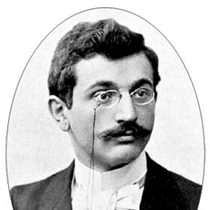Get in touch
Being always curious, I got used to looking at things from different angles and points of view. Here, at AOE, our projects follow Agile Scrum methodology. What I would like to talk about is the use of chess principles in Agile project management. You will probably ask me: What do working on a project and this board game have in common? A lot, I think.
Nonetheless, in this article, it’s not about developer vs. project manager vs. stakeholder, but what I think is a winning situation for all stakeholders involved – a successfully completed project.
Both your goal and that of your client is to implement a successful project. First, speak openly to your clients and let them know that you fully understand this and you are on the same “wavelength”. Make it clear to your customer that some of their actions may end up in an unnecessary use of resources from both sides, such as time, money or work. The key point here is to always keep in mind that you have the same goal. This will help avoid misunderstandings. And each action you or your client make could either do harm or let you move further in the implementation. So, evaluate and analyze the business value of every action and every sprint’s goal from this point of view. Just like chess players do before making a single move.

Every chess game consists of three stages: the opening, the middle game and the endgame. A Scrum sprint also also consists of three parts: sprint planning, sprint execution and sprint exit. In a game of chess, you can get really creative at the beginning of the game (the opening) and in the mid-game, but as you get closer to the endgame, almost all that is left is pure math. Now you must only make certain moves in order to win. A single inaccuracy could result in your capitulation.
As for Agile Scrum, all three phases must be also implemented properly. Choose the user stories conscientiously during the sprint planning and make sure they are well-performed (the spring execution phase) before the sprint exit date. Otherwise, if any of these parts is neglected, it will mean a failure for the entire sprint.
There are games where luck, or chance, plays an important role. Chess is not among them. And just like you can’t be a good chess player without a certain level of experience, it’s impossible to reach a successful sprint exit if you haven’t picked your user stories carefully. Do research, and it will provide you with a good start.
Here’s an example. A great idea is to do some deep research in the openings knowledge base before playing chess. Analogically, if your sprint hasn’t been planned well, you can expect either a current or further sprint to fail.
In a game of chess, there are “blitz” games and those that last for days. It’s important to be patient: to be able to evaluate, develop a strategy and reconsider the tactics. When it comes to Agile Scrum development, it’s crucial to stay patient as well and avoid rash decisions and quick analysis. Although you may have no time boundaries and tight deadlines at the beginning of the project, it’s of vital importance to find a perfect balance of time, strategy and resources.
A great chess player is characterized by creativity and making nonstandard moves. In a similar way, an Agile Scrum team must be inventive and develop innovative ideas all the time when working actively on a project. And here each team member’s contribution matters.
As you know, a gambit (that is, a pawn sacrifice during the opening) implies giving something away beforehand to create an advantage at a later point in time. In this sense gambits can also be applied in Agile Scrum project management. It can be applied in terms of project development, as well as internal team collaboration. The concept is to offer a gambit, i.e. a small sacrifice, in the name of a common goal that is important to the project team as well as the client. The important thing here is to always keep the “big picture” in mind.
In Agile development, when you’re pursuing your aim, you might have more than one direction that you can go. In a similar manner, when playing chess, there are lots of variations for each and every move. But once you've found a good one, don’t stop searching for more perfection:

An analytical review of the decisions already made (in Agile Scrum, the so called Sprint Retrospective) will reduce the chance of further mistakes in the long run. All the greatest chess champions analyze their previous games – even the wins. This is also an important part of the iterative process in Agile Scrum teams.
Thus, chess principles may be widely applied in business, especially to Agile Scrum. Act like the champions and:
Don’t expect miracles – because there won’t be any. Practice, analyze and work hard – and you’ll achieve a win-win situation for everyone in the end.
Be a player, not a pawn.